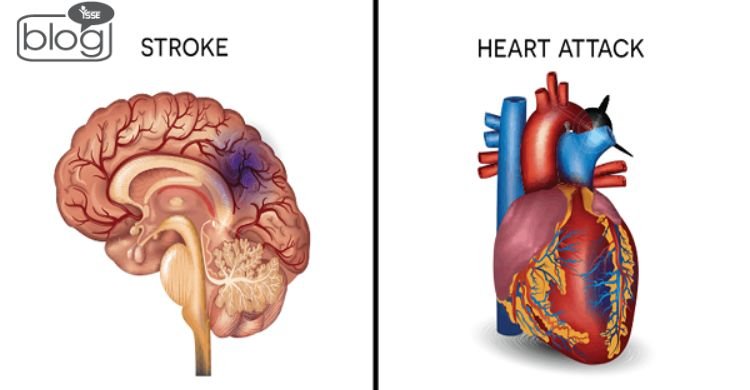Nowadays, heart attacks and strokes are very common worldwide. Millions of people are dying due to these reasons but we often think they are the same. Don’t we?
But is it actually true? To know specifically, read this blog !
Overview
The signs of a heart attack and a stroke appear suddenly. A few potential symptoms of the two occurrences are similar, however they have different additional signs.
A sudden, severe headache is a typical sign of a stroke. A “brain attack” is another name for a stroke. On the other hand, a heart attack frequently starts with chest pain.
Receiving the appropriate assistance can greatly depend on your ability to recognize the various symptoms of a stroke and heart attack.
Do you want to know about the symptoms of heart attack or stroke?
Heart attack and stroke signs and symptoms depend on: your age, gender, the intensity of the event, and your general health etc.
The signs may appear suddenly and suddenly without notice.
There must be some causes behind heart attack & stroke but what are they?
The common type of stroke can be ischemic stroke or hemorrhagic stroke. Basically, ischemic artery means circulation to the brain can be stopped by a blood clot in a brain artery. This may result in a stroke. Also, the carotid arteries provide the brain with blood. The similar outcome may occur if plaque builds up in the carotid artery.
On the other hand, hemorrhagic stroke happens when blood seeps into nearby tissue from a ruptured blood artery in the brain. A hemorrhagic stroke can be brought on by high blood pressure that puts strain on the walls of your arteries.
In addition, a coronary artery narrows or becomes clogged to the point where blood flow stops or is significantly reduced, which results in a heart attack. An artery that feeds blood to the heart muscle is called a coronary artery.
What can be the diagnosis ways for heart attacks and strokes?
Depending on the symptoms of stroke doctors will likely provide a CT scan of the brain. This can show bleeding in the brain and areas of the brain that may have been affected by poor blood flow or may also suggest MRI.
A different set of tests is done to diagnose a heart attack. Your doctor will still want to know your symptoms and medical history. After that, they’ll use an electrocardiogram to check on the health of your heart muscle. Also blood tests, cardiac catheterization may also be given.
How are heart attacks and strokes treated?
Sometimes more than simply medicine and lifestyle modifications are needed to treat the blockage that causes a heart attack. Both coronary artery bypass grafting (CAGB) and angioplasty with a stent may be required in these circumstances.
One should take part in cardiac rehabilitation following a heart attack and any necessary treatment. Cardiac rehabilitation lasts for a number of weeks and includes instruction on nutrition, lifestyle, and medication for better heart health as well as supervised exercise sessions.
In addition, the same healthy way of living is advised after stroke treatment. Also, plasminogen activator can be suggested in case of ischemic stroke. They can also remove a clot from blood arteries using microscopic instruments.
One could require surgery to fix the broken blood vessel in the event of a hemorrhagic stroke. In some circumstances, your doctor may use a specific clip to hold the damaged blood vessel portion in place.
Heart attack vs. stroke, which is worse?
According to research, strokes are the fifth leading cause of death in the US, but heart attacks are the first cause of death according to mortality statistics.
However, depending on how much brain tissue is injured after a stroke, people may experience life-altering disability, such as losing the capacity for vocal communication or the use of specific body parts (for example, your right arm and right leg). You might believe that a stroke is worse than a heart attack if you fear permanent incapacity more than death.
Click here to read more blogs.
Writer
Fahima Akter
Intern
Content Writing Department YSSE

